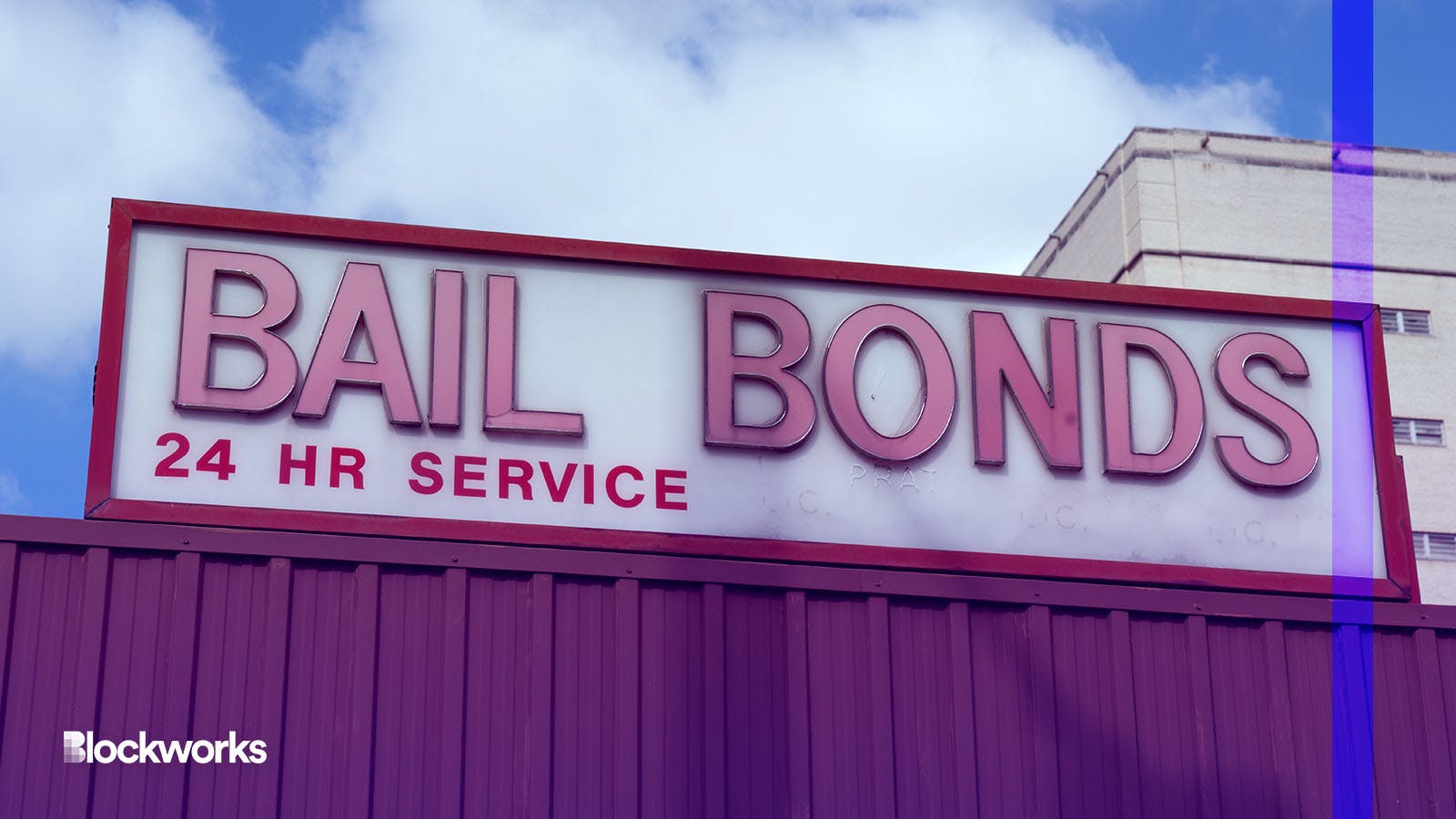SBF Won’t Actually Pay $250M for His Bail Bond
Bonds typically require 10% down for collateral: $25M. But from where?

Paul Brady Photography/Shutterstock.com modified by Blockworks
Turns out Sam Bankman-Fried wasn’t personally on the hook for his nine-figure bond — a true historical outlier in the US — posted on Thursday.
The agreement to cover the $250 million bond — known, specifically, as a personal recognizance bond — is expected to be secured against Bankman-Fried’s parents’ home in Palo Alto, CA, where the disgraced FTX founder has been court-ordered to remain until his trial. Both of his parents are professors at nearby Stanford University.
Seth Taube, a former federal prosecutor and SEC official, told Blockworks the fact Bankman-Fried based his business in the Bahamas while he lived there likely has a lot to do with the large bail bill.
“He didn’t voluntarily come back when the inquiry started, but he did consent to extradition,” Taube said. “I think had he surrendered and flown back when he heard about the investigation, that would have changed things. He chose to remain in the Bahamas and be extradited.”
A personal recognizance bond is a written guarantee to appear in court at a date and time specified by the presiding judge. The bond terms require signatures from Bankman-Fried, his parents and one non-family member, according to court proceedings. The identity of the latter individual has yet to be disclosed.
The disclosure of the third party is due by Jan. 5, and the security interest collateralized against the equity of his parents’ residence is due by Jan. 12.
Ira Lee Sorkin, who represented Bernie Madoff, told Blockworks that the total size of the amount is a bit of a red herring.
“The real issue is that if he violates his bail, they’re going to take his parents’ house…So the real test is not whether it’s $250 million or $100 million or $25 million. It doesn’t matter — it’s the house that’s the collateral,” Sorkin said.
The bail of Michael Milken — an executive at Drexel Burnham Lambert charged with racketeering and securities fraud in 1989 — was also set at $250 million, which is worth about $570 million today when adjusted for inflation. He pleaded guilty the following year to six felony counts and was sentenced to $600 million in fines and 10 years in prison.
Assistant US attorney John K. Carroll asked Federal District Judge Kimba M. Wood to set bail for Milken at $250 million, to be collateralized by the $700 million being set aside for the racketeering counts, the New York Times reported at the time. The government considered Milken’s earnings — he had received more than $1 billion over the last five years from Drexel —when coming up with that figure.
While confined to his parent’s abode, Bankman-Fried must get the court’s sign-off before engaging in any transactions of more than $1,000, excluding his attorney fees. He will also receive mental health and substance abuse treatment while awaiting trial.
Show me the money
Bankman-Fried’s two main businesses — FTX and Alameda Research — are both bankrupt. It’s not clear whether he’ll have to personally cover a portion of the cost of his bail, or his legal fees; he told Axios on Nov. 29 he had just $100,000 left in his bank account.
Plummeting prices of digital assets since the FTX insolvency, perhaps further dragged down one of the erstwhile wealthiest players in all of crypto’s once staggering fortune — said to be about $32 billion at its zenith.
But shortly before his arrest in The Bahamas, Bankman-Fried told the BBC he has no undisclosed cryptoassets.
“I’m not hiding any assets here — anything I have, I’ve disclosed to people,” he said.
One of the lingering mysteries is the fate of some $447 million in cryptoassets removed from the FTX exchange wallets via “unauthorized transfers” less than a day after the liquidity-starved exchange declared bankruptcy. Bankman-Fried said on Nov. 30 he did not know who was behind the illicit and questionably-timed transfers. Two weeks earlier, he claimed in an interview to have “narrowed it down to like eight people,” but didn’t know which one was to blame.
Gabriel Gorenstein, the federal magistrate assigned to the case, agreed that Bankman-Fried’s well-known appearance and ties to the US render his flight risk minimal.
Prosecutors said they were on board, and even somewhat sympathetic, to letting Bankman-Fried temporarily out of his detention, because he — in relatively short order— complied with their request for extradition to the US from his Bahamas home base.
If Bankman-Fried had fought extradition, instead, he likely wouldn’t have been eligible for bail at all, according to Taube.
That said, Andrew Lankler, a partner at law firm Baker Botts, said Bankman-Fried’s “flight risk” actually is greater than the likes of Bernie Madoff’s (at the time).
Madoff, a New York resident, was released on $10 million bail in 2008 after authorities said he had confessed to a $50 billion Ponzi scheme. He was ultimately sentenced to 150 years in federal prison, where he died at 82 in April 2021.
“My gut is that the [$250 million] number, in part, is also about getting a pool of funds that’s available for recovery by victims,” Lankler added. “That’s why I think the number is as high as it is.”
The legal process for extraditions, generally, can take a number of months or even drag on for years — especially so when it comes to high-profile defendants backed by high-powered defense attorneys. Given the severity of the charges, however, prosecutors asked the judge to impose a high bail threshold.
“This was a fraud of epic proportions,” Roos said. “If that was the only test, detention would likely be appropriate. But he voluntarily consented to extradition. That should be given weight.”
Get the news in your inbox. Explore Blockworks newsletters:
- The Breakdown: Decoding crypto and the markets. Daily.
- 0xResearch: Alpha in your inbox. Think like an analyst.






